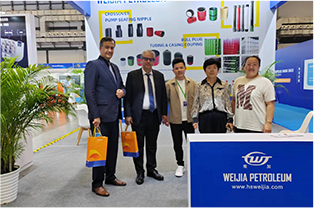- Afrikaans
- Albanian
- Amharic
- Arabic
- Armenian
- Azerbaijani
- Basque
- Belarusian
- Bengali
- Bosnian
- Bulgarian
- Catalan
- Cebuano
- Corsican
- Croatian
- Czech
- Danish
- Dutch
- English
- Esperanto
- Estonian
- Finnish
- French
- Frisian
- Galician
- Georgian
- German
- Greek
- Gujarati
- Haitian Creole
- hausa
- hawaiian
- Hebrew
- Hindi
- Miao
- Hungarian
- Icelandic
- igbo
- Indonesian
- irish
- Italian
- Japanese
- Javanese
- Kannada
- kazakh
- Khmer
- Rwandese
- Korean
- Kurdish
- Kyrgyz
- Lao
- Latin
- Latvian
- Lithuanian
- Luxembourgish
- Macedonian
- Malgashi
- Malay
- Malayalam
- Maltese
- Maori
- Marathi
- Mongolian
- Myanmar
- Nepali
- Norwegian
- Norwegian
- Occitan
- Pashto
- Persian
- Polish
- Portuguese
- Punjabi
- Romanian
- Russian
- Samoan
- Scottish Gaelic
- Serbian
- Sesotho
- Shona
- Sindhi
- Sinhala
- Slovak
- Slovenian
- Somali
- Spanish
- Sundanese
- Swahili
- Swedish
- Tagalog
- Tajik
- Tamil
- Tatar
- Telugu
- Thai
- Turkish
- Turkmen
- Ukrainian
- Urdu
- Uighur
- Uzbek
- Vietnamese
- Welsh
- Bantu
- Yiddish
- Yoruba
- Zulu
Understanding API 5CT Tubing Coupling Specifications and Their Applications in Oil and Gas Industry
Understanding API 5CT Tubing Couplings
API 5CT is an essential specification set by the American Petroleum Institute (API) that governs the requirements for casing and tubing used in the oil and gas industry. Among the various components outlined by this specification, tubing couplings play a crucial role in ensuring the integrity and reliability of oil and gas extraction operations.
What Are API 5CT Tubing Couplings?
API 5CT tubing couplings are mechanical devices used to connect lengths of tubing in wells. These couplings provide a means to secure the tubing strings to enable the efficient flow of oil and gas from reservoirs to the surface. They are manufactured to high standards and are available in different sizes and specifications according to the specific needs of the operation and regulatory requirements.
Importance of Tubing Couplings
The importance of tubing couplings cannot be understated. They serve several critical functions
1. Structural Integrity Tubing couplings help maintain the structural integrity of the tubing string, which is subjected to high pressures and loads during operation. A failure in a coupling can lead to catastrophic well failures, resulting in costly downtime and potential environmental hazards.
2. Sealing To prevent fluid leakage and maintain well integrity, the couplings are designed to create tight seals between adjacent tubing sections. This sealing capability is vital for efficient hydrocarbon production and safeguarding the surrounding environment.
3. Ease of Installation and Maintenance API 5CT tubing couplings are engineered for easy installation and disassembly, allowing for rapid maintenance and replacement when necessary. This is particularly important in the oil and gas industry, where downtime can lead to significant financial losses.
4. Standardization Being API certified, these couplings adhere to strict international standards, ensuring compatibility with other components in the oil and gas infrastructure. Standardization facilitates easier procurement and reduces the risk of using incompatible equipment.
Types of Tubing Couplings
api 5ct tubing coupling

API 5CT tubing couplings come in various types to cater to different operational needs
. The most common types include- Coned Type Couplings These couplings are often used for medium to high-pressure applications. Their design provides greater strength and facilitates a secure fit between tubing sections.
- Non-Coned Type Couplings As an alternative, non-coned couplings are typically employed in lower-pressure applications where ease of connection and disconnection is prioritized.
- Integral Couplings In some applications, integral couplings that are machined directly onto the tubing are used. These provide an uninterrupted flow path and can enhance the overall lifetime and strength of the tubing.
Quality Control and Testing
The production of API 5CT tubing couplings involves rigorous quality control and testing. Manufacturers must comply with specific testing protocols, including
- Hydrostatic Testing This test ensures that the couplings can withstand the required pressure levels without failure.
- Visual Inspection To identify any visible imperfections, all couplings undergo thorough visual checks.
- Nondestructive Testing (NDT) Techniques such as ultrasonic testing and magnetic particle inspection are used to detect internal or surface flaws that may compromise the quality and safety of the couplings.
Conclusion
API 5CT tubing couplings are a vital component of the oil and gas industry, facilitating the safe and efficient extraction of hydrocarbons. Their design, manufacturing standards, and testing protocols ensure that they can withstand the demands of harsh working environments. Understanding the importance and functionality of these couplings will help stakeholders in the oil and gas sector maintain operational efficiency and safety, ultimately contributing to the successful management of their resources.
-
Tubing coupling plays a significant role in the chemical industryNewsApr.03,2025
-
The Importance of Tubing Crossover in Various Industrial FieldsNewsApr.03,2025
-
The characteristics and important role of Tubing Pup JointNewsApr.03,2025
-
Characteristics and functions of Pup jointNewsApr.03,2025
-
Characteristics and Functions of Pup Joint PipeNewsApr.03,2025
-
Application of Coupling Casing in Various ScenariosNewsApr.03,2025







